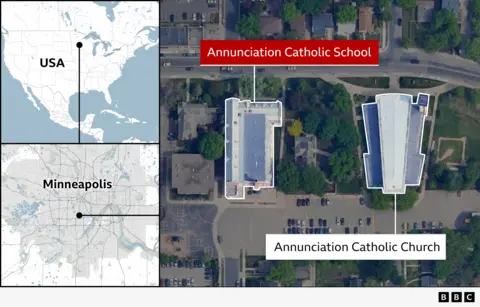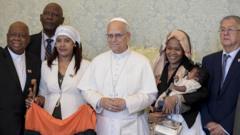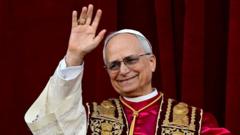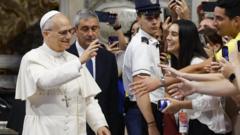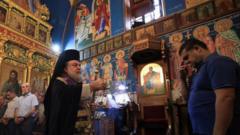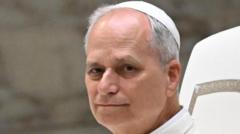In the heart of Vatican City, Pope Leo XIV recently led his inaugural Mass, a stark contrast to the colorful crowning traditions of the past. For centuries, the installation of popes was marked by the majestic donning of the papal tiara, a ritual steeped in opulence and temporal authority. The last pontiff to wear the tiara was Paul VI, who in 1964 chose to abandon this tradition, opting instead for a simple miter, emphasizing a shift towards modernity and humility in an ever-evolving Catholic Church.
Historically, the coronation was one of the most extravagant moments in a pope's ascent, comparable to royal ceremonies, as illustrated in Thomas B. Morgan's 1937 reflections on Pope Pius XI's inauguration. The imagery of the papal tiara—from its stunning adornments to the regal processions—was a powerful symbol of the papacy's earthly authority. However, Pope John Paul II, during his 1978 homily, pointedly noted the need to focus on spiritual leadership rather than relics of temporal power.
The decline of the papal crown reflects a broader shift within the Church towards humility and accessibility. As part of this transformation, ceremony locations transitioned from domed cathedrals to more open and communal spaces, allowing for greater physical involvement from the faithful.
This evolution in papal rituals is emblematic of a larger dialogue within the Church, striving to balance tradition with a contemporary understanding of spirituality, inclusivity, and relevance. The moving away from the tiara, now residing in the Basilica of the National Shrine of the Immaculate Conception in Washington, D.C., signifies not just a change in ceremony but a rethinking of the very nature of papal authority in a modern world.
As the Church continues to navigate its legacy while engaging with the present day, the ceremonies of its leaders will likely continue to reflect an ever-changing relationship with both tradition and the communities they serve.
Historically, the coronation was one of the most extravagant moments in a pope's ascent, comparable to royal ceremonies, as illustrated in Thomas B. Morgan's 1937 reflections on Pope Pius XI's inauguration. The imagery of the papal tiara—from its stunning adornments to the regal processions—was a powerful symbol of the papacy's earthly authority. However, Pope John Paul II, during his 1978 homily, pointedly noted the need to focus on spiritual leadership rather than relics of temporal power.
The decline of the papal crown reflects a broader shift within the Church towards humility and accessibility. As part of this transformation, ceremony locations transitioned from domed cathedrals to more open and communal spaces, allowing for greater physical involvement from the faithful.
This evolution in papal rituals is emblematic of a larger dialogue within the Church, striving to balance tradition with a contemporary understanding of spirituality, inclusivity, and relevance. The moving away from the tiara, now residing in the Basilica of the National Shrine of the Immaculate Conception in Washington, D.C., signifies not just a change in ceremony but a rethinking of the very nature of papal authority in a modern world.
As the Church continues to navigate its legacy while engaging with the present day, the ceremonies of its leaders will likely continue to reflect an ever-changing relationship with both tradition and the communities they serve.




